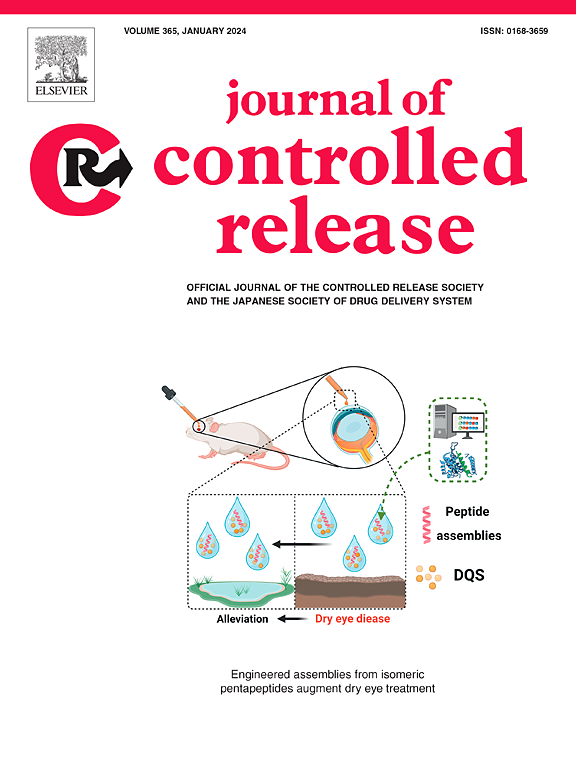Local controlled release of stabilized monoclonal antibodies
IF 10.5
1区 医学
Q1 CHEMISTRY, MULTIDISCIPLINARY
引用次数: 0
Abstract
Monoclonal antibody (mAb) therapeutics have become widely successful for treatment of any number of diseases. However, for certain hard-to-reach tissues, e.g., eye, brain, tumors, and joints, local delivery is desired and long-term controlled release is necessary to avoid frequent injections and poor patient compliance. If local and sustained exposure of mAbs (or their Fab or nanobody fragments) could be accomplished by injectable polymer long-acting release (LAR) systems, the incredible potential of mAb therapeutics could be extended to additional diseases, e.g., neovascular age-related macular degeneration (wet AMD) and glioblastoma multiforme (GBM). In prior studies, long-acting delivery of mAbs has been limited by the inability to design a delivery system prepared from a biodegradable polymer used in FDA-approved LARs that achieves long-term continuous release of structurally stable and immunoreactive mAb with a low initial burst release that is easily injectable and avoids material build-up upon repeated injection. Here, we present for the first time a long-acting delivery system capable of delivering several different mAbs for multiple indications by developing a novel process to stabilize mAbs through the combination of formulation, micronization and encapsulation conditions, and to control stabilized mAb exposure in vivo for months by formulation with an appropriate biodegradable polymer (poly(lactic-co-glycolic acid) (PLGA)), utilization of a pH- and pore-modifying agent, and development of a novel PLGA coating layer to control osmotic pressure induced by elevated levels of critical co-encapsulated stabilizers, particularly mAb-stabilizing-trehalose. The resulting implants showed long-term efficacy in animal models for both wet AMD and GBM after single local injections. Although much more work needs to be done before their clinical application to these two diseases, the injectable PLGA platform meets several important benchmarks for controlled mAb delivery and can be developed further for delivery of a wide array of mAbs and other cofactors, offering an improved therapeutic option for treating diseases amenable to local antibody therapy.One Sentence Summary: A generalizable injectable biodegradable PLGA implant platform for site-specific and long-term slow and continuous release of stabilized monoclonal antibody drugs demonstrates improved in vivo efficacy for wet AMD and glioblastoma.

求助全文
约1分钟内获得全文
求助全文
来源期刊

Journal of Controlled Release
医学-化学综合
CiteScore
18.50
自引率
5.60%
发文量
700
审稿时长
39 days
期刊介绍:
The Journal of Controlled Release (JCR) proudly serves as the Official Journal of the Controlled Release Society and the Japan Society of Drug Delivery System.
Dedicated to the broad field of delivery science and technology, JCR publishes high-quality research articles covering drug delivery systems and all facets of formulations. This includes the physicochemical and biological properties of drugs, design and characterization of dosage forms, release mechanisms, in vivo testing, and formulation research and development across pharmaceutical, diagnostic, agricultural, environmental, cosmetic, and food industries.
Priority is given to manuscripts that contribute to the fundamental understanding of principles or demonstrate the advantages of novel technologies in terms of safety and efficacy over current clinical standards. JCR strives to be a leading platform for advancements in delivery science and technology.
 求助内容:
求助内容: 应助结果提醒方式:
应助结果提醒方式:


